Scores of Migrant Children Considered or Attempted Suicide in US Custody, Records Show
This story was produced as a project for the USC Annenberg Center for Health Journalism’s 2021 Data Fellowship.
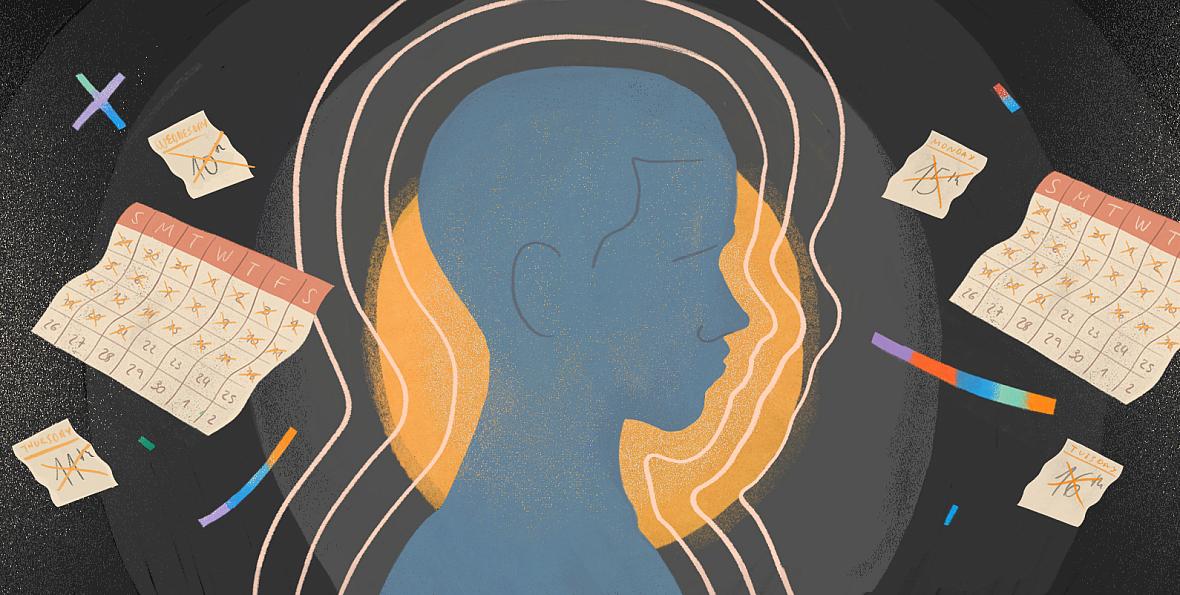
Credit: Lola Avigliano for Reveal
NOTE: This story discusses instances of suicidal thoughts and suicide attempts by children. If you’re thinking about suicide, are worried about a friend or loved one, or would like emotional support, contact the National Suicide Prevention Lifeline at 1-800-273-8255.
On a Saturday night in April 2021, a 15-year-old migrant from Guatemala told a friend he was so desperate to get out of a government-sponsored emergency shelter that he was contemplating suicide. He badly wanted to be reunited with his uncle. The friend told an adult there.
It was his 33rd night in confinement at the emergency shelter in the Kay Bailey Hutchison Convention Center in Dallas. But the shelter didn’t appear to be prepared to deal with the child’s mental health needs.
The records in the boy’s case, obtained by Reveal from The Center for Investigative Reporting through a public records request and subsequent lawsuit, underscore the confusion at the massive 2,300-bed facility: Three different entries in his record describe what happened in three different ways.
In one part of the government’s record, a supervisor from Culmen International – a military contractor awarded nearly $30 million to manage the emergency shelter – said the child should be taken to an on-site medical clinic for evaluation. The teen said he missed his family and confirmed that he did feel suicidal. He conceded what his friend reported seeing: that he tightened the identification badge lanyard around his neck. But he insisted he wasn’t trying to end his life.
“Child dreams about getting out of here,” a staffer wrote. “Child appears sad but not desperate.”
One entry in the report says the child was seen at the medical clinic, where he confirmed thoughts of suicide and the clinic determined he was “just sad.” The boy was told “his feelings are normal,” according to case notes. But in another part of the record, a staffer said they were never informed about the boy’s suicidal ideation or attempt once he arrived to the clinic. A third entry says the child hadn’t been to the clinic at all.
That same evening, the teen was back in his sleeping cot in Pod G with a staffer watching over him for his safety, still far from the family he was longing to be reunited with.
Early the following morning, Jackie Sanchez-Perez, a federal worker on loan to the Office of Refugee Resettlement to help run this emergency shelter, tried to find the boy to make sure he was safe.
Sanchez-Perez demanded help from the Culmen command desk, the records state, and a runner escorted her to the 15-year-old at his pod. She introduced herself and told the child that he wasn’t in any trouble.
He told Sanchez-Perez that he knew what this was about: “those thoughts.” The ones that drove him to think about ending his life. She was concerned that he never got the help he needed at the shelter, and he was transferred to a local children’s hospital for mental health care.
In President Joe Biden’s first three months in office, Reveal found nearly 600 episodes in which migrant children in the government’s custody said they’d considered or attempted suicide, either before or since arriving in the United States.
Records document 141 instances in which migrant children expressed thoughts of suicide while in Office of Refugee Resettlement custody and at least 10 times when they attempted suicide. Children often complained about their length of stay, the isolation they felt after their friends were released and the suffering they experienced being away from their families. The children were in custody an average of 37 days at the time of the episode. The records indicate that no children died by suicide.
In the vast majority of cases, children ages 6 to 17 told staff they’d considered or attempted suicide before ending up in custody. The children often shared their experiences with staffers in response to questions during a standard intake process. Notes in the government’s data indicate that the youth often were placed on safety plans and assigned counseling and close monitoring. They sometimes landed in hospitals because the government-sponsored programs – emergency shelters, licensed shelters and foster care – were unable to tackle the challenge alone.
Suicidal Episodes in Migrant Children’s Shelters
We analyzed nearly 600 records, archived by the Office of Refugee Resettlement between Jan. 20, 2021, and April 28, 2021, in which migrant children expressed thoughts of suicide before arriving to the United States or while in federal custody. These seven examples illustrate some of the stakes for children desperate to get out of custody and reunite with their families.
Federally funded permanent shelters, in a vast network across the country, are licensed by the states and therefore subject to oversight. Foster programs, which are also state licensed, provide a family-like structure and relative freedom when compared to shelters. The emergency shelters, however, operate without a license and are often run by military contractors with experience in logistics, not necessarily in caring for migrant children.
Records indicate a particularly acute issue at these emergency shelters, such as the convention center where the teen was held in Dallas. In a span of just a few weeks last year, at least 20 children in emergency shelters received outside treatment because their mental health needs weren’t met on-site. That’s a far higher proportion than at state-licensed shelters, indicating just how sweeping the need is and how unprepared the emergency shelters were to meet it.
Culmen and Sanchez-Perez referred questions to the Office of Refugee Resettlement, which is responsible for the care of migrant children. The federal refugee agency conceded that it was moving a large volume of children into understaffed emergency shelters and that children were entering physical facilities before case management operations were in place.
The agency also defended what occurred at the emergency shelter that weekend last year, saying children who attempt suicide are routinely transferred to emergency rooms to get the care they need. The government’s record doesn’t indicate whether the teen was ever reunited with his uncle.
The Kay Bailey Hutchison Convention Center stands in Dallas. In 2021, the U.S. government set it up as a 2,300-bed emergency shelter for unaccompanied migrant children. Credit: Ron Jenkins/Getty Images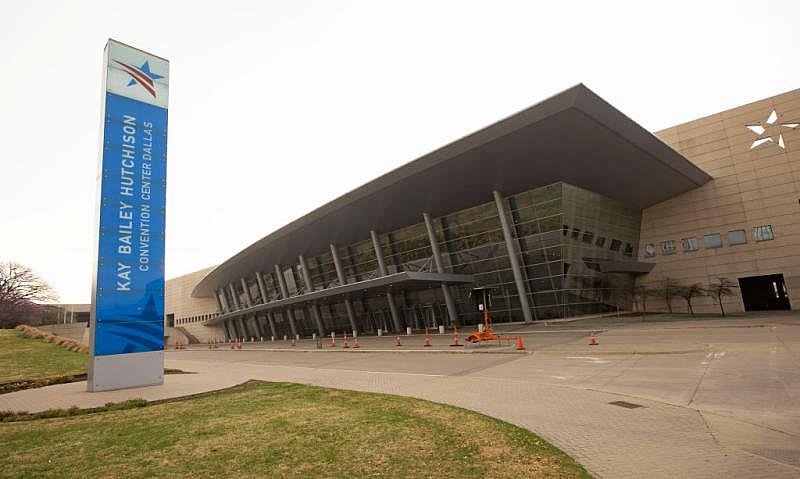
Liz Castillo, a senior organizer with the nonprofit advocacy group Detention Watch Network, said the frequency of suicidal episodes affirms her organization’s position that migrant children’s shelters are incapable of handling the care of vulnerable children who’ve already experienced considerable trauma before arriving at the United States.
“For years now, we’ve been reckoning with the consequences of our inability or unwillingness to address the systemic issues underlying our reception and care of migrant children,” Castillo said. “It’s not surprising that children in ORR custody frequently experience mental health crises.”
The Cost of Keeping Children Separated From Their Families
When something especially notable happens with a child in a given program’s care – a pregnancy, an allegation of abuse, a thought of suicide – a shelter must produce a Significant Incident Report to alert the refugee agency.
Reveal first sought reports in 2019 related to suicidal episodes among children in shelters and sued the federal government in 2020 after it failed to deliver the records.
Through settlement negotiations, Reveal ultimately obtained full narratives about suicidal episodes among migrant children from late January to late April 2021, the first three months of Biden’s administration. The government’s records don’t include children’s names or information on their case outcomes.
The records divulge the cost of keeping children, especially those who’ve already endured tremendous trauma in their countries of origin and on their journey to the United States, separated from their families and isolated from their communities.
The refugee agency refused to provide its contracts with the companies housing migrant children, citing internal policy. In April 2021, the agency outlined staffing ratios for emergency shelters: one mental health clinician for every 50 migrant children, though the requirement kicked in only after 20 days and the service could be rendered remotely. By comparison, licensed shelters are generally expected to provide one mental health clinician for every 12 children from the moment the operation begins.
The data obtained by Reveal is the best window available into how mental health crises are handled in a patchwork system that’s sometimes ill-equipped to tackle serious episodes, leaving migrant children to bear the tremendous toll.
As Reveal’s ongoing investigation into the detention of refugee minors has shown, prolonged detention can fundamentally change children. From 2014 to 2020, the government held nearly 1,000 children for longer than a year. In some cases, children have been held for extended periods even though they have family in the United States willing and able to care for them.
The refugee agency said it takes seriously its responsibility to reunite children with their sponsors quickly, and children currently spend an average of about 25 days in custody. It must identify a suitable sponsor. Sometimes, that means choosing from more than one potential sponsor or finding a backup if a sponsor backs out. Reunification for children who’ve been trafficked or have significant disabilities might take longer because the process requires home visits. All placements require extensive paperwork.
“My experience in speaking to children is that, oftentimes, the suicidal intentions formed when a sponsorship application was protracted,” said Holly Cooper, who co-directs the Immigration Law Clinic at the University of California, Davis and often represents migrant children in class-action lawsuits. “Kids are suffering a continuum of trauma, and a longer length of stay exacerbates that trauma. It informs the deterioration of a child’s mental well-being.”
Some children also said they lacked information about their case or access to case managers, who are largely responsible for facilitating family reunification. The refugee agency said case management in its unlicensed shelters has improved since last year. In August 2021, children were able to see case managers once a week; by May 2022, it was twice a week.
A 14-year-old from Honduras spent the holidays in the refugee agency’s custody in December 2020. By February 2021, after nearly two months in custody, the teenager told a clinician at the Virginia-based Adore Children and Family Services foster program that for weeks, he’d been thinking almost every day about ending his life but wasn’t sure how he’d do it.
Tina Andrews, Adore’s program director, declined to talk about this episode, citing confidentiality laws.
The notes from the clinician, a then-employee of Adore, indicate the child’s isolation felt more pronounced over time. The teenager initially made friends, but they’d been reunited with their families, and he was left behind.
He did see reasons to live. Chief among them was reuniting with his aunt in the United States. He wanted to get married and have children of his own one day. First, he had to be free. The records do not explain why he hadn’t yet been turned over to his aunt.
Although he thought about cutting himself, he said he didn’t want to explain the scars to his future children.
The clinician and the child created a safety plan. The next time he felt like taking his life, he agreed to tell a trusted adult. His identified coping skills included meditation, drawing mandala circles and listening “to music of his choice that is upbeat and contains positive lyrics.”
Records indicate the teen’s sense of social support was diminished as friend after friend left the program. His time away from his family was taking its toll, and the key to his recovery was his release.
“It is in the opinion of this clinician that the minor stands to greatly benefit from reunification with his family member and post release services and counseling as an addition,” the entry said.
Praying, reading the Bible, drawing and listening to music were often identified in the records as coping skills for migrant children in federal custody struggling with past or current suicidal episodes.
But experts say that kind of treatment can be inadequate or, in the absence of appropriate intervention, even dangerous.
“Even as well intentioned as the caretakers might be, if you don’t have a systematized way of responding to these issues that is evidence-based, you’re putting these kids’ lives in danger,” said developmental psychologist Daisy Camacho-Thompson.
For example, Camacho-Thompson said she and a colleague recently studied the effect of religious coping strategies on Mexican-origin adolescents living in the U.S. who were struggling with “internalizing symptoms” like anxiety, depression and sleep disorders. The study found that when adolescents held a strong conviction that they could control their circumstances, religious coping significantly reduced internalizing symptoms. When they held little conviction that they could control their circumstances, religious coping was linked to higher levels of anxiety and other internalizing symptoms.
“Religious identity can be protective of mental health and a source of comfort,” Camacho-Thompson said. “But it can also inform negative outcomes.”
Biden Leaned on Emergency Shelters as More Migrant Children Arrived
Former President Donald Trump used the pandemic to justify barring migrants from seeking asylum in the U.S. through the use of a public health order known as Title 42.
As soon as Biden took office in January 2021, he was pressed to fulfill campaign promises to “undo Trump’s damage” on immigration. He announced his administration would reverse Title 42 for unaccompanied minors, allowing them to seek asylum. While the public health order remains in place to expel migrant adults and families (plans to end the program in its entirety have stalled in court), unaccompanied children began arriving at the border in bigger numbers.
President Joe Biden announced in 2021 that his administration would reverse Title 42 for unaccompanied minors, allowing them to seek asylum in the U.S. Credit: Chip Somodevilla/Getty Images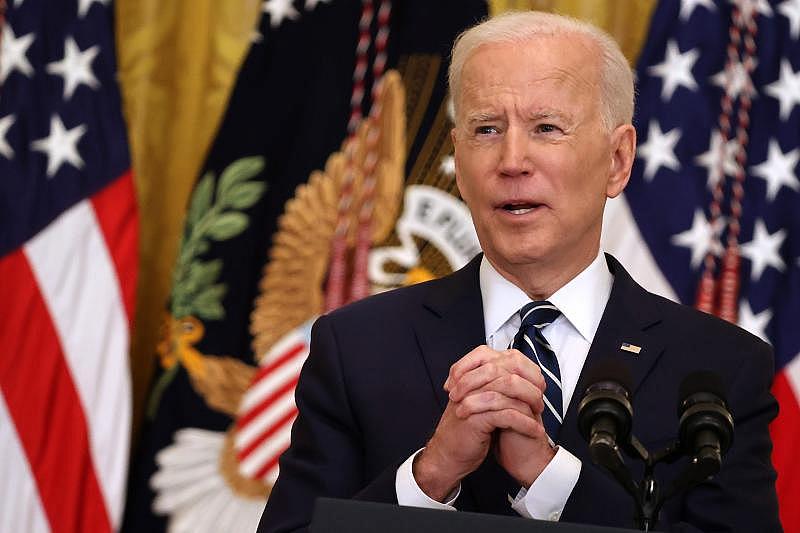
Many went into the vast network of federally funded, state-licensed shelters and some to foster programs.
While the episode at Adore was challenging, for example, it occurred in a state-licensed program experienced in caring for children. A clinician could devote attention to the matter. The child was evaluated and a plan was made to tackle his suicidal thoughts, all on-site.
But by mid-March 2021, Biden’s administration was routing children into new emergency shelters in cavernous convention centers and soft-sided military base tents stacked with hundreds or even thousands of cots.
Unlicensed emergency shelters are designed to serve children who arrive at the border unaccompanied (or are rendered so by the government). Those children are first processed through U.S. Border Patrol facilities, often called hieleras – the Spanish-language word for an icebox. A federal settlement agreement stipulates that anyone under 18 should be transferred to the care of the federal refugee agency after no more than three days.
Minors lie inside a pod at a holding facility, called a hielera, for unaccompanied children in Donna, Texas, in March 2021. The facility is run by U.S. Customs and Border Protection. Credit: Dario Lopez-Mills/Associated Press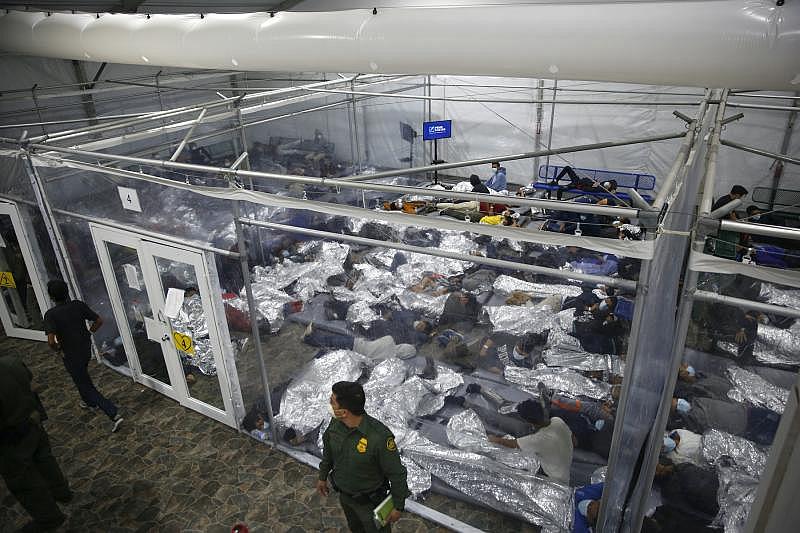
In the past, emergency shelters have come and gone, usually opening in the spring and subsequently closing as demand lessens. But their use lasted for more than a year under Biden.
The refugee agency said the two remaining emergency shelters in the government’s network – Pecos and Fort Bliss in West Texas – were converted this month into “influx” shelters. Influx shelters are also unlicensed, but they meet the same higher standards of care as a licensed facility, according to the Office of Refugee Resettlement.
The emergency shelters were usually run by government agencies like FEMA or defense contractors with medical, border enforcement or military backgrounds. What the companies lack in migrant child welfare experience, they make up for in skills working in pure scale: running a tent city on a military base that warehouses as many as 5,000 migrant children. Add the workers who serve in these facilities and, by the numbers, emergency shelters approach the size of a small city.
Records show the 2,000-bed Pecos Children’s Center is run by Endeavors, which had hired former U.S. Border Patrol Chief Carla Provost as site director when it opened as an emergency shelter last year. Provost led the Border Patrol during a spate of child deaths in custody and was scrutinized for her membership in a xenophobic Facebook group.
At least two children experienced suicidal episodes at Pecos in early 2021, according to the refugee agency’s data.
An official with the U.S. Department of Health and Human Services said the agency didn’t know Provost ran the Pecos shelter, and federal rules prohibit it from controlling contractors’ hiring and firing decisions.
Endeavors acknowledged that Provost directed the emergency shelter from its opening in March 2021 through May 2021 and that she’s now a contractor for the company.
Castillo, with Detention Watch Network, said the massive unlicensed facilities used by the government are not appropriate for children.
“They lack not only the individualized care and support children need to reunite with their families and support systems as swiftly as possible, but also culturally sensitive systems and mechanisms to address the unique stressors and trauma children often endure not just in their journeys, but in federal custody as well,” she said.
Endeavors employees escort a line of teenage boys at a migrant children’s emergency center in Pecos, Texas, in October 2021. Credit: Nick Wagner/San Antonio Report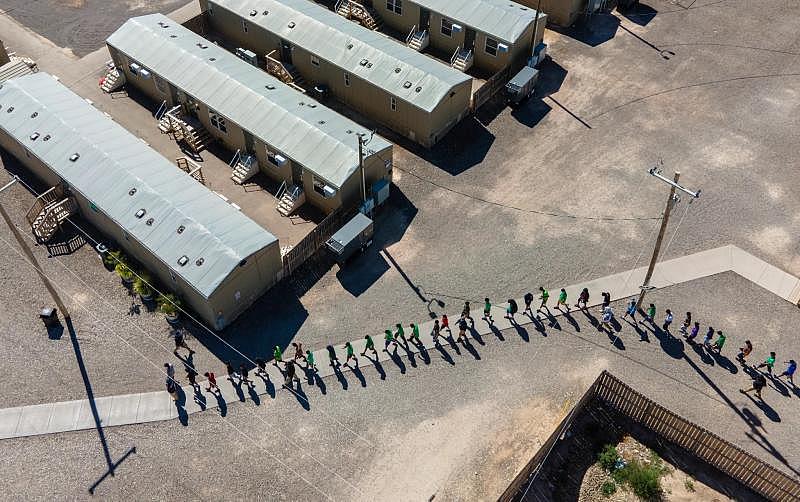
The refugee agency said staff at influx facilities receive ongoing training in cultural competency and reporting, as well as other skills to respond to mental health care challenges in these shelters.
Three emergency shelters open during the time in which the Office of Refugee Resettlement provided records – Midland and Lackland Air Force Base, both in Texas, and the Pennsylvania International Academy, which collectively housed close to 1,500 beds for migrant children – listed no suicidal episodes. The agencies and organizations that helped run these facilities didn’t respond to questions about the absence of any reports or referred questions to other agencies, including the Department of Health and Human Services, which also declined to comment.
Reveal’s analysis found that within the first six weeks of the emergency shelters operating, they recorded 50 suicidal episodes involving migrant children who thought about ending their lives or attempted to do so, either while in a shelter or before entering the refugee agency’s custody.
A 16-year-old from Guatemala who’d already been in custody for nearly a month was being evaluated for a rash in the middle of the night at the Dallas convention center emergency shelter in April 2021 when he told staffers he was deeply saddened that his friend left the program. He said he planned to end his life.
The teenager was sent to a local emergency room, and notes indicate the hospital “determined child needed a higher level of care.”
Instead of returning to the emergency shelter in Dallas, the teen was sent to a licensed shelter in Florida the next day.
Officials didn’t think he could get the care he needed in an emergency shelter. “Child is currently in transfer to new facility where he can receive the care and services he requires,” the government record reads.
NOTE: If you’re thinking about suicide, are worried about a friend or loved one, or would like emotional support, contact the National Suicide Prevention Lifeline at 1-800-273-8255.
This story was produced as a project for the USC Annenberg Center for Health Journalism’s 2021 Data Fellowship. It was edited by Kate Howard, Andrew Donohue and Sumi Aggarwal and copy edited by Nikki Frick.
Aura Bogado can be reached at abogado@revealnews.org. Follow her on Twitter: @aurabogado.
[This article was originally published by Reveal.]
Did you like this story? Your support means a lot! Your tax-deductible donation will advance our mission of supporting journalism as a catalyst for change.

